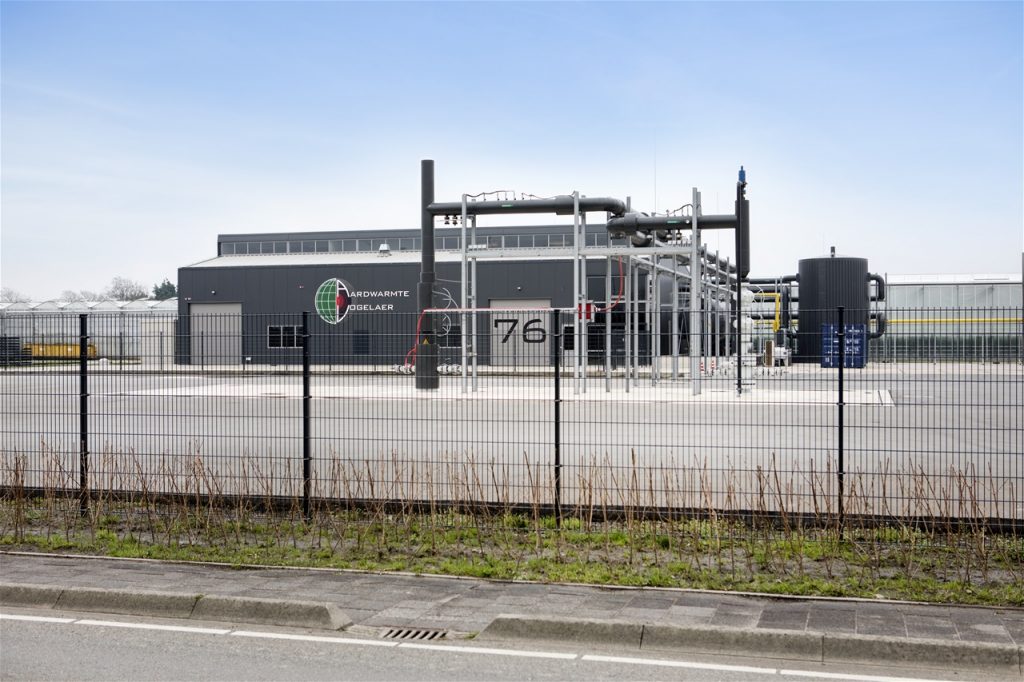Gas from geothermal production to fuel power generation

To cover its electricity needs, Dutch geothermal operator Aardwarmte Vogelaer is now to tap co-produced gas from geothermal operations for power generation.
Horticulturalists have a demand for heat that geothermal energy provides in a sustainable manner. At the same time, a geothermal energy project has an electricity demand. In order to implement this in a sustainable way, Aardwarmte Vogelaer (Geothermal Vogelaer) in Poeldijk, Netherlands is investing in cogeneration [of gas]. And an associated combined heat and power (CHP) building, which is being built by Twins Bouw. With these steps, the gas that comes along with drilling for geothermal energy will soon be converted into electricity. This is reported by Groenten Nieuws.
Until now, people in Poeldijk always did without a CHP. The geothermal heat project in Poeldijk has been running since the beginning of 2017, to which seventeen horticultural companies are connected. “Since then, the resource has been running well and is producing well,” says Léon Lankester, director of the company and also involved in the latest developments on behalf of the consultancy firm AAB.
Expensive electricity
The source provides 19 MW of heat. Electricity is needed to get that to the gardeners. The pumps for production and injection run on it. The supply and transport on the heat network to which the source is connected also requires electricity. Until now, this was partly made with our own solar panels and for the most part purchased from the grid.
“However, this has become increasingly expensive in recent years,” says Léon. “Moreover, the levy of Sustainable Energy Storage means that we have to incur even higher costs. That is of course very unfortunate, because a super sustainable project is also burdened with extra energy tax to make sustainable projects possible. It was the last push for us to start making electricity ourselves. ”
For this, it was decided last year to purchase a CHP. It has a capacity of 1 MW. Relatively small for horticultural concepts, agrees Léon, but spacious enough to be able to supply the geothermal energy project with its own electricity. “The CHP should be able to run in October. If all goes well, there is even a little electricity left to feed back into the grid. ”
In 2019, the company won the prestigious Techniek Netherlands Innovation Award, we reported on the company as part of a wider regional cooperation earlier this year.
Roof above CHPs
The CHP at the geothermal source will of course not be placed outside. Twins Bouw is currently building a CHP building. The building measures 12.6 by 24 meters. If necessary, 3 CHPs fit into this, says Thomas Zwinkels, construction manager on behalf of Twins Bouw. “The first pile was driven earlier this month and the concrete work has also started. We will be pouring the floor at the beginning of April and the entire building will be ready in week 20. ” Thomas speaks of a ‘special project’ with which they contribute to a more sustainable future. “That is why it is nice to give it positive attention, also for the affiliated entrepreneurs.”
Twins Bouw also built such a cogeneration building in collaboration with AAB for another Westland geothermal heat project, GeoPower Oudcamp in De Lier. Léon explains that this is because gas almost always rises from the soil in Westland with the warm water. Roughly 1 cubic meter of gas with 1 cubic meter of warm water, in the case of the project in Poeldijk. “That gas, methane gas, is very similar to the Slochteren gas that we know. We have 300 cubic meters per hour available on our doublet. ”
284 cubic meters of this is used by the CHP. The leftover gas is for the boiler, with which Aardwarmte Vogelaer is currently able to raise the temperature of the heat supply on the heat network by 6 degrees Celsius. As soon as the CHP starts to turn, it is still 3 degrees. “At that moment we convert the rest of the gas into electricity.”
Second well
In addition to the investment in a CHP, Aardwarmte Vogelaer is currently also investing in research into drilling a second doublet. “That should happen in 2022,” says Léon. At that time, the installations need to be doubled, including the aforementioned pumps. “And that would also require a second CHP. There is room for this in the CHP building. ”
Since the start of the project, the number of affiliated growers has already expanded a number of times. With the current well, there is still a little space left for additional growers who want to connect. And because plans are also underway for a second source, Aardwarmte Vogelaer is looking for additional heat distribution options.
Also connecting houses
These can be gardeners, but will also be houses. “A conscious choice,” explains Léon. “A residential area is being built a little further in Monster, where we can supply 420 homes with sustainable heat with our source. We believe it is our responsibility to ensure that the built environment is also involved. ”
In other words, is there a piece of corporate social responsibility? “Yes, certainly”, agrees Léon. “Currently the business case for connecting greenhouse horticulture is actually better. But because the subsurface here is good, we believe that everyone should reap the benefits. ”
Source: Groenten Nieuws